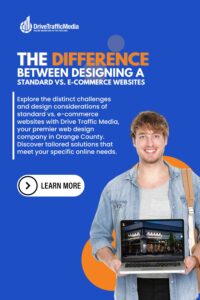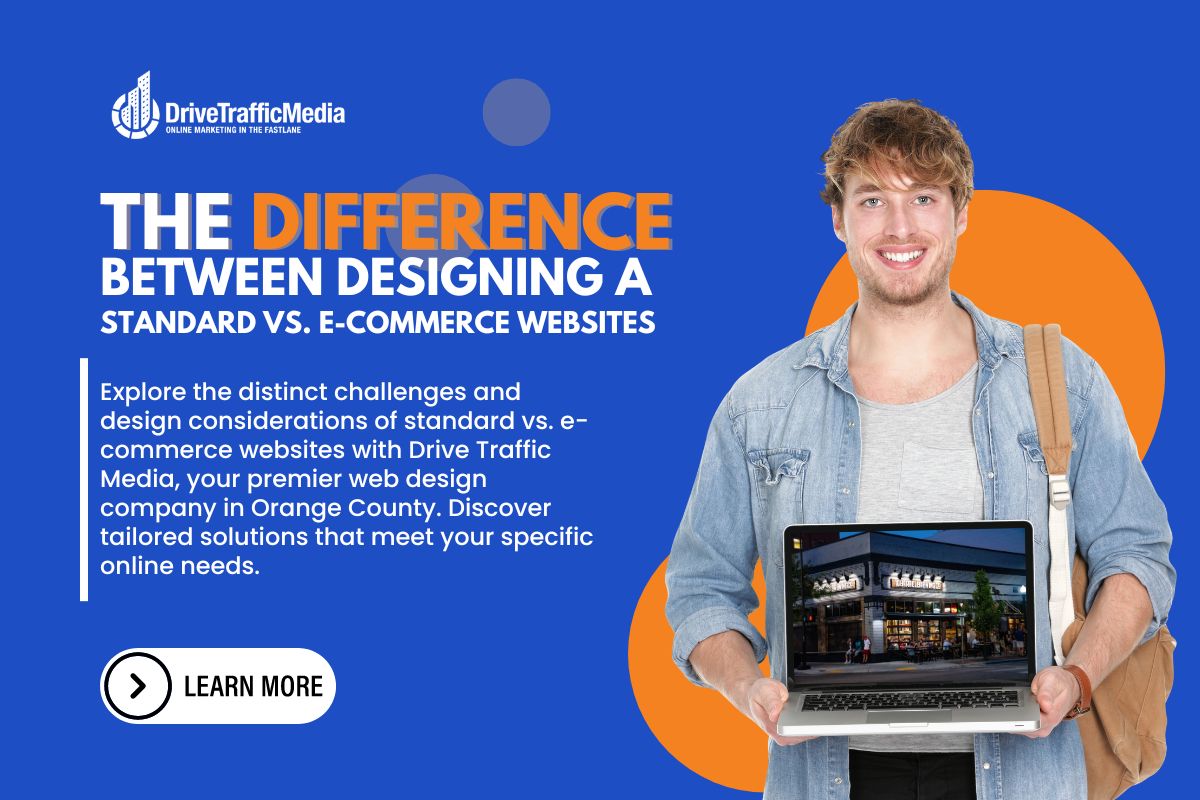These days, businesses are increasingly looking to establish a strong online presence through well-designed websites. Whether it’s a standard informational site or a comprehensive e-commerce platform, each type of web design poses unique challenges and requirements. Drive Traffic Media, a leading web design company in Orange County, dives into the key differences and considerations when designing these websites, ensuring your online presence is both impactful and effective.
1. Purpose and Functionality
Standard Websites: These sites generally provide information about a company, person, or service. The primary focus is on aesthetics, navigation, and content, aiming to inform visitors and establish credibility in the market.
E-commerce Websites: The goal here is to sell products or services directly through the site. This requires integrating functionalities like shopping carts, product catalogs, and payment processing systems. The design must not only be attractive but also optimized for conversions and user experience.
2. User Experience (UX) Design
Standard Websites: UX in standard websites involves creating a seamless flow of information, making sure that users can find what they need effortlessly. The emphasis is on simplicity and speed.
E-commerce Websites: E-commerce UX goes further to include aspects such as user trust, security, and the checkout process. It’s crucial to design intuitive navigation for product searches and comparisons, and a frictionless checkout process to reduce cart abandonment rates.
3. SEO Considerations
While both website types require strong SEO to attract visitors, the approach varies significantly:
Standard Websites: SEO strategy might focus on content richness, keyword integration related to services or corporate identity, and local SEO practices to attract visitors from specific geographical areas like Orange County.
E-commerce Websites: Here, SEO must cater to product-specific keywords, including long-tail queries that potential customers might use. Structured data markup becomes crucial to highlight product information directly in search results.

4. Security Measures
Standard Websites: Basic security measures are often sufficient, including SSL certificates and routine backups.
E-commerce Websites: These sites require advanced security protocols to protect customer data and transactions, such as PCI compliance, advanced encryption, and multi-factor authentication.
5. Maintenance and Updates
Standard Websites: Typically, less frequent updates are needed, mostly around content or to refresh the design.
E-commerce Websites: Requires ongoing updates to product listings, promotions, and security features, demanding a more robust approach to website management.
6. Scalability
As businesses grow, their websites must evolve:
Standard Websites: Scalability might involve adding new content sections or integrating additional functionalities like blogs or forums.
E-commerce Websites: These must scale in more complex ways, such as expanding product lines, integrating new payment options, or handling increased traffic during peak times without affecting performance.
Conclusion
Whether you’re looking to launch a standard or an e-commerce website in Orange County, understanding these differences is crucial for success. Drive Traffic Media offers expert web design services tailored to meet these diverse needs, ensuring your site not only looks great but also performs well, engages your audience, and supports your business goals. Contact us today to find out how we can transform your online presence with cutting-edge web design solutions tailored for both standard and e-commerce platforms.
